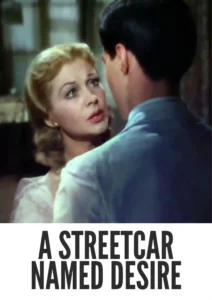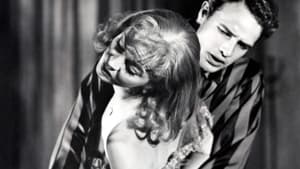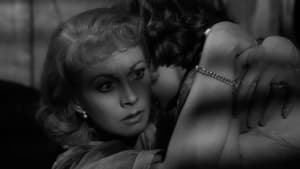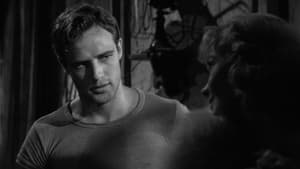Video Sources 0 Views
- Watch trailer
- A Streetcar Named Desire 1951 Colorized


Synopsis
Table of Contents
Toggle
Immerse yourself in the sultry world of Tennessee Williams with A Streetcar Named Desire, a powerful Southern Gothic drama from 1951, now brilliantly colorized for an unforgettable viewing experience. Starring Marlon Brando and Vivien Leigh and directed by Elia Kazan, this film delivers a gripping exploration of desire, delusion, and the clash between old and new societal values in the heart of New Orleans. Perfect for fans of classic literature and intense character studies, this HD download brings a timeless masterpiece to life with stunning clarity and emotional depth.
A Streetcar Named Desire tells the story of Blanche DuBois (Vivien Leigh), a fragile and fading Southern belle who arrives in New Orleans to stay with her younger sister, Stella (Kim Hunter), and her brutish, working-class husband, Stanley Kowalski (Marlon Brando). Blanche, haunted by a troubled past and clinging to illusions of gentility, finds herself increasingly at odds with Stanley’s primal nature and the harsh realities of her present circumstances.
As Blanche struggles to maintain her facade of refinement, her lies and vulnerabilities are gradually exposed, leading to a dramatic confrontation with Stanley that shatters her fragile world. Stella is torn between her loyalty to her sister and her passionate relationship with her husband, creating a volatile dynamic that threatens to destroy them all. Set against the backdrop of the vibrant and gritty French Quarter, A Streetcar Named Desire is a searing portrayal of human frailty, societal decay, and the destructive power of unchecked desire.
The film boasts an iconic cast of actors who deliver unforgettable performances:
-
Vivien Leigh as Blanche DuBois
-
Marlon Brando as Stanley Kowalski
-
Kim Hunter as Stella Kowalski
-
Karl Malden as Harold “Mitch” Mitchell
A Streetcar Named Desire transcends simple categorization, blending elements of Southern Gothic drama, psychological thriller, and social commentary. Its exploration of complex characters and taboo themes broke new ground in American cinema.
Released in 1951, A Streetcar Named Desire reflected the changing social landscape of post-World War II America, challenging traditional notions of family, class, and gender roles. The film’s unflinching portrayal of sexuality and mental illness sparked controversy at the time but also paved the way for more honest and daring storytelling in Hollywood. Elia Kazan’s direction captured the raw intensity of Tennessee Williams’s play, earning critical acclaim and solidifying its place as a landmark in American cinema.
This colorized version of A Streetcar Named Desire has been meticulously restored using state-of-the-art digital techniques, enhancing the visual impact while respecting the film’s original atmosphere of tension and claustrophobia. The colorization process involved careful study of historical references and artistic direction to ensure an authentic and nuanced color palette. The painstaking effort brings new depth and vibrancy to the characters and settings, making the story even more emotionally resonant for contemporary audiences. While debates about colorizing classic films continue, this version offers a fresh perspective on a timeless work of art.
-
: Elia Kazan
-
: Tennessee Williams, Oscar Saul
-
: the play by Tennessee Williams
-
: Harry Stradling
-
: David Weisbart
-
: Charles K. Feldman Productions
-
: Warner Bros.
-
: 125 minutes
-
: MP4
-
: HD (1080p)
-
: Compatible with most devices, including smartphones, tablets, computers, and smart TVs.
A Streetcar Named Desire (1951) is widely regarded as one of the greatest films ever made, earning numerous awards and nominations for its direction, acting, and screenplay. Its powerful themes and unforgettable performances continue to resonate with audiences today. The film’s exploration of mental illness, sexual desire, and social injustice remains relevant and thought-provoking, solidifying its legacy as a cinematic masterpiece.
-
: What is A Streetcar Named Desire about?
-
A: A Streetcar Named Desire is a Southern Gothic drama about a fading Southern belle who seeks refuge with her sister in New Orleans, only to clash with her brutish brother-in-law.
-
-
: Is A Streetcar Named Desire (1951) a highly acclaimed film?
-
A: Yes, A Streetcar Named Desire is considered a cinematic masterpiece, known for its powerful performances and groundbreaking themes.
-
-
: Is this version of A Streetcar Named Desire colorized?
-
A: Yes, this version has been professionally colorized to enhance the viewing experience.
-
-
: What makes A Streetcar Named Desire significant in film history?
-
A: A Streetcar Named Desire challenged traditional social norms and paved the way for more honest and daring storytelling in Hollywood.
-
-
: What is the download format?
-
A: The download format is MP4, which is compatible with most devices.
-
-
: What resolution is the download?
-
A: The resolution is HD (1080p), providing a high-quality viewing experience.
-
Watch A Streetcar Named Desire Today!




















